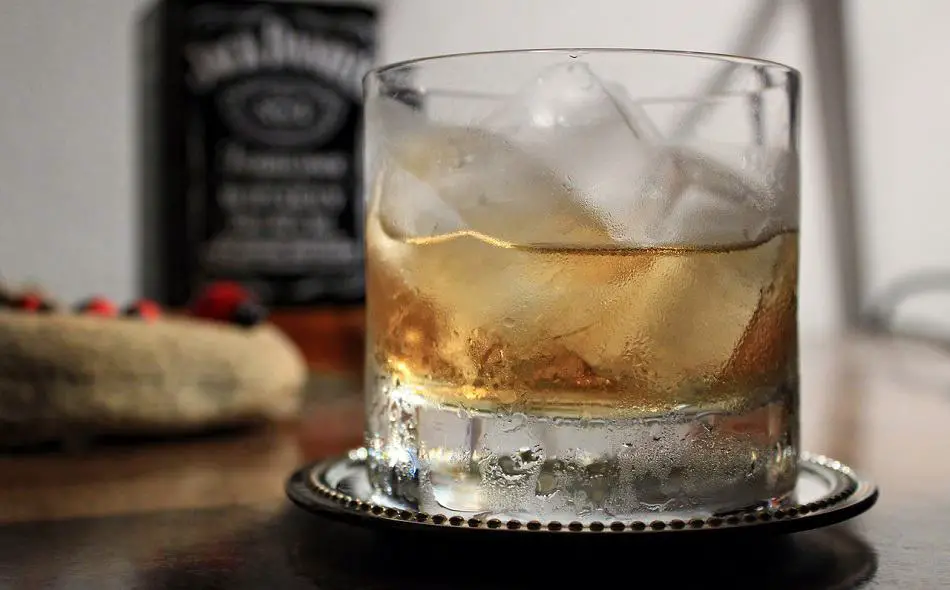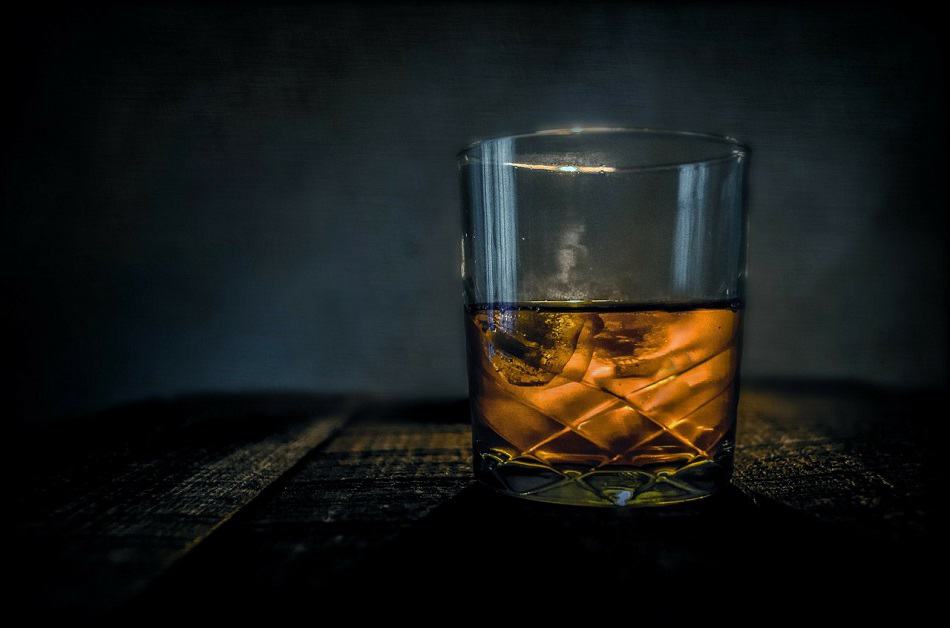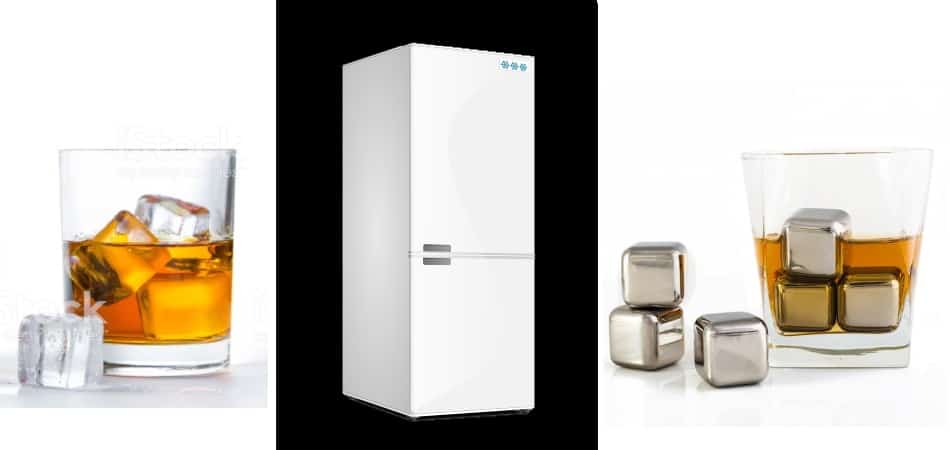Many factors affect a whiskey’s taste and a big one is its temperature. It’s common to see people chill their whiskey with ice but is that a good idea? Should you really be drinking your whiskey cold?
Whiskey should not be drunk cold because its aromas and flavors become muted at lower temperatures. The cold can also cause a whiskey to become cloudy. It’s therefore best to drink whiskey at room temperature: 20°C – 22°C / 68°F – 72°F, so you’ll easily be able to detect the aromas and flavors and your whiskey will not lose its golden color.
We’ll take a closer look at the effects cold has on whiskey to ensure that you’re getting the most from your drink. Then we’ll consider the times when you may actually want to drink whiskey cold and the three ways to do that.

Why You Shouldn’t Drink Whiskey Cold
As mentioned, whiskey should not be drunk cold because that mutes the whiskey’s aromas and flavors and can make whiskey become cloudy. Let’s look at both those things separately.
Cold Mutes the Aromas and Flavors of Whiskey
This is a major problem because the whole point of whiskey is to get as much as you can from its aromas and flavors. This is in contrast to vodka that doesn’t have much if any flavor in the first place, so the cold can’t make it worse.
The cold mutes a whiskey’s aromas and flavors because being at a lower temperature the flavor molecules are prevented from evaporating. Therefore, there will be no aromas to smell and because flavor is a combination of taste and smell you won’t get all the flavors either.
However, at room temperature, the flavor molecules will evaporate. You’ll be able to smell the aromas and therefore pick up all the subtle flavors from your whiskey.
Of course, you don’t want your whiskey too warm otherwise … well it’ll be too warm (ugh) and also, you’ll start picking up more of the alcohol which evaporates at a higher temperature. It will be far more difficult to pick up the whiskey’s aromas when you’re also getting a face full of ethanol fumes.
And now you know why nosing glasses have a stem and tumblers have a thick bottom and (sometimes) sides. So that your hand doesn’t warm the contents of the glass too much.
Cold Can Make Whiskey Become Cloudy

This is a problem because part of the enjoyment of drinking whiskey is its beautiful golden color. Also, some people don’t like drinks with clumps of tiny bits floating around inside – or maybe that’s just me.
The cold can make whiskey become cloudy because of the natural fatty acids, esters and proteins from the barley that was used to make the alcohol, and the wood of the casks used in the maturation process, which are usually dissolved in the alcohol and so don’t affect the clarity or color of the whiskey.
However, if a whiskey is chilled it causes the fatty acids, esters and proteins to un-dissolve and become separate from the alcohol. They clump together in a special arrangement known as micelles and once there are enough of them, make your whiskey cloudy.
This won’t happen if your whiskey has been chill filtered which is a process that many distilleries put their whiskeys through so that they can never become cloudy.
They basically do what the name suggests, chilling the whiskeys so that the fatty acids, esters and proteins will un-dissolve and then filtering out these clumps. That way when you chill your whiskey at home, the molecules that would have un-dissolved and clumped together to make your whiskey cloudy, are no longer present to do so and your whiskey retains its golden color.
It’s important to note: If you’re in the unfortunate position of having been served cold whiskey so you can’t pick up the aromas and it’s become cloudy, don’t assume the whiskey should just be thrown away or drank quickly because it’s ruined. It isn’t. Cold doesn’t ruin whiskey permanently, it only causes problems temporarily.
All you need to do is wait and let the whiskey return to room temperature. The flavor molecules will then evaporate, and you’ll be able to smell the aromas and pick up all the subtle flavors from your whiskey. It will also cause the fatty acids, esters and proteins to re-dissolve and your whiskey’s original golden appearance to be restored.
Of course, while you wait for this to happen you should definitely take a sip of your whiskey in the meantime. That way you can compare the flavors in both states properly.
Times You Would Want to Drink Whiskey Cold
Having said all the above, there are times when you may want to drink whiskey cold.
You Want a Refreshing Drink
You may want a cool, refreshing drink as well as a whiskey. Perhaps it’s a hot day, perhaps you’re in a hot part of the world. Or perhaps you’re the kind of person who prefers a cool, refreshing whiskey more than one at room temperature. Or perhaps you’re simply in the mood for a cold drink at this time. After all, the best way to drink whiskey is really dependent on how you’re feeling at the time.
You Want to Dull the Burn of the Alcohol
Whiskey has an alcohol level of between 40%ABV – 68%ABV. That’s strong. Some people simply don’t like that much alcohol and its burn. Cooling the whiskey and lowering its temperature will dull the effects of the alcohol and reduce its burn.
Some Whiskeys Are Better Cold
Different whiskeys have different personalities and characteristics. You may find some are simply better when served cold because as the whiskey is warmed in the mouth and the flavor molecules are awakened, the aromatics shoot straight up to the nose via the sinuses.
Also, if cold mutes the aromas and flavors of whiskey then any whiskey with a bad taste will be better off served cold. That way it may not taste too bad.
3 Ways to Cool Your Whiskey

There are three ways to cool your whiskey, each with their own advantages and disadvantages.
1. Cool Your Whiskey With Ice
Ice cubes are a great way to chill your whiskey. Simply put a couple of ice cubes into your drink and wait for your preferred temperature.
Make sure that the water you use to make the ice cubes with is neutral – you don’t want to add flavors to your whiskey, and because ice can take on the flavors and smells of the things it’s stored with, that they’re stored away from the weird and smelly stuff in your freezer. Isolate the ice cubes in a special container or – if you really want to go there, a separate ice-cubes-for-whiskey freezer.
The only problem with using ice cubes is that they melt, dilute your whiskey and ruin its taste. That’s why you should always use large or even giant ice cubes because with less surface area than many smaller ice cubes put together, they will melt slower.
Now for many people this slow dilution of the whiskey as the ice cubes melt is perfect, as the ice reduces the burn of the alcohol and the added water opens up the whiskey’s flavors. In fact, they enjoy tasting all the changes in the whiskey as the ice cubes continuously melt and the added water keeps on opening up new flavors.
On the other hand, since every drop of water can make a difference to the taste of your whiskey, many people like to have much more control over this and use a dropper to add one drop of water at a time. They don’t like not knowing how much water has been added by the ice cubes at any given time of the melting process and would therefore prefer a different method of chilling their whiskey.
2. Cool Your Whiskey in the Freezer
Cooling a bottle of whiskey in the freezer will not have the problem of ice melting in your whiskey and diluting it.
It will have the problem of you needing to cool the entire bottle which may not be desirable if you’re pouring for different people some of whom don’t want their whiskey cold.
3. Cool Your Whiskey With Whiskey Stones
Whiskey stones are pieces of stone or metal that are frozen and then used as an ice-alternative for chilling your whiskey. Being that they’re not made from frozen liquid they won’t melt.
On the other hand, this is also a disadvantage because unlike ice cubes where the heat that’s absorbed makes some of the ice melt, so the heat is drawn off leaving the rest of the ice cube cold enough to continue cooling the drink, whiskey stones which can’t melt, retain the heat of the alcohol.
This means that they will cool your drink at first, but the more they do so, the warmer they become and the less effective they will now be in cooling your drink further. Also, since it takes a relatively large amount of heat for the solid-to-liquid phase change to occur, more heat will be absorbed by ice cubes in the first place than by whiskey stones which remain in one state.
The upshot of all this is that whiskey stones are not as effective as ice cubes. However, since the cold mutes the aromas and flavors of whiskey this may not be that much of a problem. Sure, if you want an ice-cold whiskey, you’d better use ice cubes, but if you want a slight chilling where less aroma and flavor is lost you may be better off with whiskey stones.

